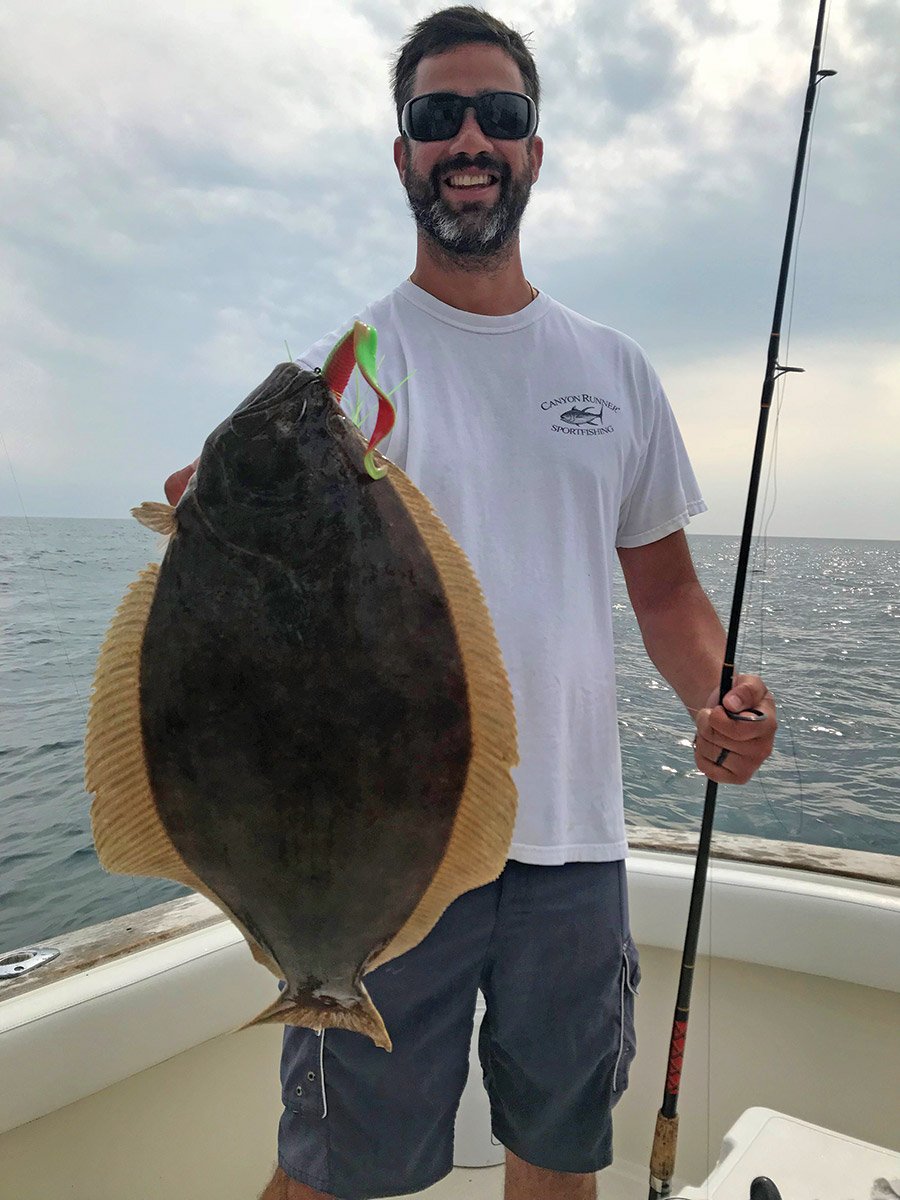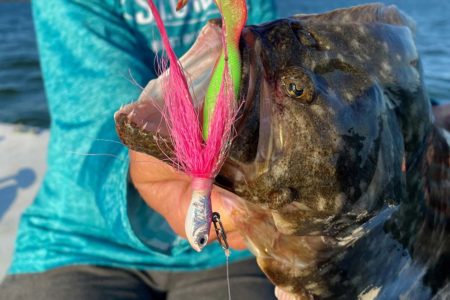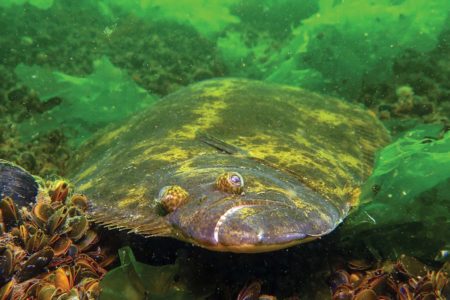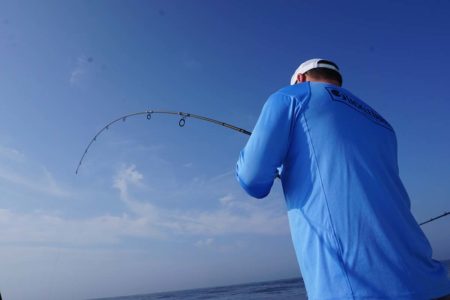
Stick and move for fluking success.
As the sun starts setting a bit earlier every day, and early morning temperatures start to cool just a tad as they inevitably do every year, our summer season wanes and our opportunities to fish for fluke start to narrow a bit. Ocean fluke fishing has become a specialized game, and as fluke slowly start to migrate offshore for the winter, anglers need to refine their techniques to find keeper sized late season fluke.
Fish that were on artificial reefs, wrecks, hills or high spots for most of the summer will typically migrate offshore first, and the areas they go to are places that they can find an easy meal. Typically this is structure, natural or artificial, that lies offshore 5 or more miles, often in 70 feet of water or more. Not every wreck or reef holds fluke, and some are just not right for fluke fishing; but some are very much in play and hold quality fish. Pinpointing these areas and fishing them correctly is the biggest focus when late summer fluking.
I typically like to fish low lying structure that’s not too “sticky” in the sense that every time you pass over you lose bucktails and jigs immediately. Where I’ve fished out of the Central Jersey area for decades, there are a host of wrecks that fit this description, and some that do not. If you have been fishing these waters long enough with your own boat, and have done your research and homework, you probably understand my point here.
The structure where I like to fish that consistently holds fluke in August and September have some characteristics in common. They sit in 70 to 85 feet of water; they are typically wooden wrecks that are “low lying” in that they don’t stick up really high off the bottom; they have pockets of relief along the edges (This means that there are dips in the bottom around the wreck.) with debris fields around them.
If you pick a wreck and get to it, you can see most of these factors clearly on your depthfinder. First check for how high it sits off the bottom. Then observe what the edges of the structure look like. Finally search the perimeter for any “stuff” sitting on the bottom around the wreck. Many wrecks look like this, and if this is what your favorite wreck looks like on your depthfinder, hit it hard! One last point, for planning a trip. Make sure you have a few wrecks in mind to fish. You never know if there will be another boat on the piece, or if there is no life on one of the pieces you want to fish. If something’s not working, move on.
Gulp, bucktails, teasers, and jigs all work just like they do inshore throughout the season. As a matter of fact, you want to employ the same medium conventional or spinning gear that you use fishing your local reef or lump inshore. However, fishing wrecks takes a little bit more boat maneuvering than simply fishing larger pieces. Remember that wrecks are typically smaller pieces of bottom that you’re fishing, so you will have to shorten your drifts to fish the productive areas.
Once you get to the piece, fish the edges. The relief, the debris field, the edges of the wreck itself, work those areas hard. Sometimes, getting away from the wreck just a bit out into the sand can also be productive. Once you find where the fish are located, hit the area hard. I like to call it “carpet bombing” as you are concentrating your efforts on one small area where fish are coming up. The operator of the boat must keep the boat right in the strike zone by using the motors and the wind and current to his or her favor. Long drifts will not work; keep them short and work the area where the fish are.
Late summer fluking can be extremely productive if you fish the right areas and concentrate your efforts where the fish actually are sitting. Fish areas where these fish will be migrating, like wrecks that are off the beach, and shorten up your drifts so you can stay in the strike zone. If you follow these simple tips, you will be catching fluke until the season closes, or until the fluke have finally made their way offshore.
Go out there and keep the summer alive by putting a nice mess of fluke in your cooler!





